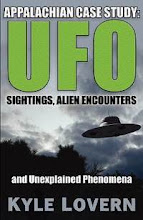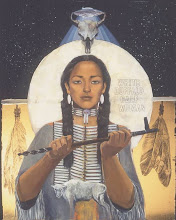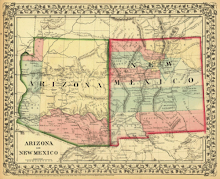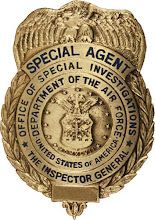By Steve Hammons
In December 2017 the New York Times broke the story about a top secret Pentagon project called the Advanced Aerospace Threat Identification Program (AATIP). In connection with that news, three declassified videos from U.S. Navy fighter jets were released to the public.
The videos showed what the Navy is calling “unidentified aerial phenomena (UAP).” And Navy pilots gave first-hand accounts of their interactions with unusual objects while at sea with aircraft carrier strike groups.
For people who were curious about or interested in the topics of UFOs and other “weird science” – and some people who weren’t – the release of this information seemed quite significant. Some national security experts and those in Congress made public their concerns and views about the situation.
But since many stories about UFOs are not at all new, and a number of researchers have looked into the subject over the decades, these new developments might seem like just another piece of the mysterious puzzle.
Reflecting interest in the overall subject, Roswell, New Mexico, has been drawing crowds for their annual UFO-themed celebration for many years. Several other towns around the country have similar events, along with occasional conferences featuring UFO researchers and interested citizens.
SAFETY BRIEFING
Movies, TV shows, books and other media have told us many stories of allegedly real, or possibly real, incidents about UFOs. These stories can generate skepticism, amazement and wonder, hopefulness, curiosity or even concern and anxiety.
Still, the lure of places like Roswell seems to fascinate many people.
And it’s not just UFOs. A number of other unusual phenomena also draw certain types of travelers and adventure-seekers who want to explore mysteries of various kinds.
Luckily, sometimes these locations are also in beautiful areas of our country from the Pacific Northwest to the Southwest, Midwest, South and New England. Some are populated regions, some rural and some in wilderness areas.
The same common-sense safety guidelines apply to UFO tourists as other travelers. Be respectful of your surroundings. Avoid dangerous areas. Watch out for sketchy characters. Don’t feed the bears in the Smoky Mountains. Don’t pet the bison in Yellowstone. Don’t fall off the edge of the Grand Canyon taking a selfie.
And don’t get close to a UFO as there have been reports of various kinds of injuries such as radiation burns, as well as other concerning reports and stories.
A firefighter training manual published in 1992 called "Fire Officer's Guide to Disaster Control" instructed fire service and EMS first responders that the two main hazards of UFOs are powerful anomalous energy fields and psychological impacts. In fact, there is a section in the book called “Adverse Potential of UFOs.”
UFO dangers can include unusual beams or rays, according to the manual. And mental effects from encounters with UFOs can include hypnotic, disorienting, fearful, confusing or paralyzing mental and emotional states.
The book’s authors also point out that proximity to UFOs has been associated with impacts like disruption of power grids, vehicles, aircraft and communications which could also affect firefighter operations and public safety.
So now that we’ve had our safety briefing, what’s another interesting area to visit as UFO and adventure travelers besides Roswell?
UFO VACATIONS EAST AND WEST
According to many or most researchers, after the alleged Roswell crash in the summer of 1947, the debris was promptly flown to Wright-Patterson Air Force Base in Dayton, Ohio. The base was then, and is now, a center for the analysis of foreign aircraft.
The Air Force's UFO research operation known as Project Blue Book operated from Wright-Patterson AFB from 1952 to 1970. And the second season of the A+E History Channel TV series "Project Blue Book" about it will be out soon.
"Wright-Patt" is also home of the National Museum of the United States Air Force, the offical museum of the Air Force. It reportedly is the largest and oldest museum on military aviation on the planet.
Although the museum does not yet have a UFO exhibit, visitors can explore a number of educational encounters about the history of flight, the development of modern aircraft, the role of air power in our national defense, future development of our aerospace knowledge and capabilities (which might be related to UFOs?), and the list goes on.
You don’t need to “storm Wright-Patt” to encounter this knowledge – admission and parking are free! Museum hours are 9 a.m. to 5 p.m. daily.
Okay, the National Museum of the U.S. Air Force is not a secret vault for UFOs (as far as we know), but just being in the proximity of a historic base like Wright-Patterson is quite an experience in itself. Use your imagination!
When you think about it, when Dayton locals Wilbur and Orville Wright started flying their invention, it was an unidentified, anomalous, aerial flying object or phenomenon.
How about out West?
In addition to Roswell, two other well-known alleged incidents involve the two towns of Aztec and nearby Farmington, New Mexico, 15 miles apart. Some researchers have claimed or suspected that in 1948 a UFO crashed or made a controlled crash landing outside of Aztec. That was the year after the alleged Roswell crash. And in 1950, the people of Farmington witnessed three days of an “armada” of unusual objects in the sky – many, many unidentified objects.
The Farmington area was the site of a recent movie shoot for “Jumanji: The Next Level.” In fact, the headline for a Dec. 24 article in the Durango Herald newspaper in nearby Durango, Colorado, asks, “Could Farmington be the next Hollywood?”
Aztec and Farmington are in the well-known Four Corners region where the states of Arizona, Utah, Colorado and New Mexico intersect.
The ancient Native American ruins at Chaco Canyon National Historical Park, Mesa Verde National Park and Canyons of the Ancients National Monument are nearby, and thousands of people visit those areas each year. The town of Cortez, Colorado, is a good base of operations to explore Mesa Verde Country. The Crow Canyon Archaeological Center four miles outside of Cortez is a fantastic look into the past. The center has a lodge and cabins.
Northeast of Cortez and higher in the mountains is Telluride, known for skiing and the annual film festival there.
A bit further east in nearby Durango, Colorado, the famous old-time train, the Durango & Silverton Narrow Gauge Railroad, takes thousands of visitors from around the country and the world up and down the rugged San Juan Mountains. The train takes daily trips to the town of Silverton, deeper into the San Juan National Forest, and back to Durango.
It's actually only a short distance between Silverton and Telluride "as the crow flies." But that crow would have to fly over some massive mountains. The scenic, winding roads between the two towns follow the few paths available through those mountains.
That area is also a travel destination for outdoor activities like hiking, fishing, camping, ziplining, soaking in hot springs, river rafting, and in winter, skiing, snowboarding, outdoor winter activities – and maybe more soaking in hot springs. The Purgatory Resort is great for winter sports and summer activities.
UFO tourists and outdoor adventure travelers in the Southwest need some cowboy grub and a few good cowboy songs once in a while. When in Durango, check out the Bar D Wranglers Old West Cowboy Music Show and Chuckwagon Supper north of town, "Durango's favorite family entertainment since 1969."
One of my personal favorites is “Riding for the Roundup (in the Springtime),” on YouTube with the current Wranglers and an older version. Although once in a while they might sing on key, give a couple of their instrumental songs a listen – “Red Cliff” and “Clarinet Polka.”
There’s a lot of wildlife up in those mountain forests. If you’re stealthy and respect Nature, you can immerse yourself in and interact with that ecosystem. The Bar D Wranglers’ thoughtful tune “Man Walks Among Us” might get you in the mood for that. So, UFO and outdoor adventure tourists, “Saddle Up.”
Also in the Durango area, the Continental Divide goes through that exact region, extending north to Alaska and south to South America. Water from the the west side of the divide flows to the Pacific Ocean, and to the Atlantic on the east side. The Continental Divide National Scenic Trail is a popular route for serious hikers.
Also in the general Four Corners region is Sedona, Arizona. That area is world-renown for the beauty of its amazing red rock cliffs and rock formations. It’s said that there are unique geomagnetic forces at work in the Sedona area causing unusual effects on people. These “vortexes” of some kind of Earth energy are believed by some to possibly be related to the geology of the area – high iron oxide, high quartz and certain underground volcanic formations.
Yes, UFOs and unusual incidents have been reported in the Sedona area. So when hiking the beautiful red-earth trails and red rocks, and feeling those geomagnetic vortex vibes, it might be good to keep an eye on the sky too.
A bit southeast of Sedona and Flagstaff (home of Northern Arizona University) you will find the Apache-Sitgreaves National Forests where the alleged UFO incident occurred involving a forest-clearing crew. That case was the basis for the movie “Fire in the Sky.”
Both those national forests and nearby Coconino National Forest to the northwest include thousands of acres of ponderosa pines covering the mountains around Flagstaff and the Mogollon Rim, a picturesque and defining southern edge of the Colorado Plateau and the Colorado Plateaus Physiographic Province. Great for hiking and camping.
Is UFO tourism an emerging trend? We’ll have to wait and see, but there seems to be a trajectory of more public interest in this topic and its alleged history – and future.
(Related article “Storytelling affects human biology, beliefs, behavior” is posted on the CultureReady blog, Defense Language and National Security Education Office, Office of the Undersecretary of Defense for Personnel and Readiness, U.S. Department of Defense.)

























































































































































































